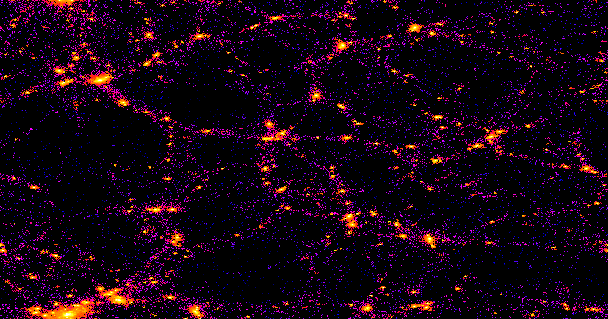 The Nature of Dark Matter
The Nature of Dark Matter
 The Nature of Dark Matter
The Nature of Dark Matter
A popular theory for galaxy formation holds that the universe is dominated by cold dark matter (CDM). Such a model, if it is to be viable, must account for the structure of individual galaxies and their haloes. Simulations of a flat CDM universe can resolve structures of comparable scale to the luminous parts of galaxies. Such a universe produces objects with the abundance and characteristic properties inferred for galaxy haloes. The results imply that merging plays an important part in galaxy formation, and suggest a possible explanation for the Hubble sequence.

Figure 3: N-body simulation of a CDM Universe.
However, the CDM theory has suffered recent setbacks from observational evidence which suggests that there is more large-scale structure than CDM can explain. This evidence may force a fundamental revision or even abandonment of the theory or may simply reflect a modulation of the galaxy distribution by processes associated with galaxy formation. Better understanding of galaxy formation is needed before the demise of CDM is declared.
Home |
Overview |
Current Research |
Publications |
Archive
Personnel |
Funding & Sponsors |
Observational Resources